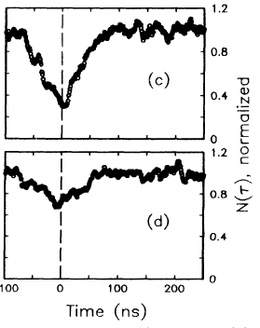(first antibunching with a single molecule) |
m |
||
| Line 23: | Line 23: | ||
<center><wz tip="The molecule as a 3LS.">[[File:Screenshot_20240113_141033.png|400px]]</wz></center> | <center><wz tip="The molecule as a 3LS.">[[File:Screenshot_20240113_141033.png|400px]]</wz></center> | ||
| + | |||
| + | They also looked at the antibunching of two molecules: | ||
| + | <center><wz tip="Antibunching of one (top, c) and two (bottom, d) molecule(s).">[[File:Screenshot_20240113_145145.png|260px]]</wz></center> | ||
Latest revision as of 13:54, 13 January 2024
Photon antibunching in the fluorescence of a single dye molecule trapped in a solid. T. Basché, W. E. Moerner, M. Orrit and H. Talon in Phys. Rev. Lett. 69:1516 (1992). What the paper says?
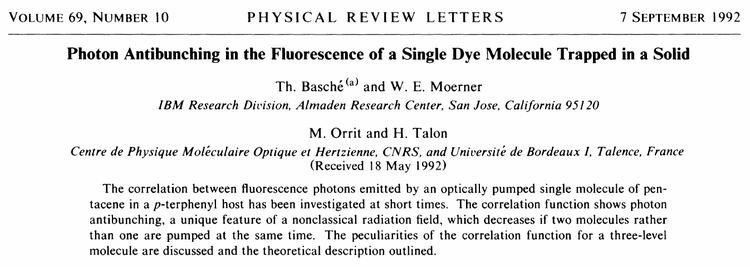
This reports the first antibunching of a single molecule (namely, a single pentacene molecule in a p-terphenyl crystal). The solid "traps" the molecule and furthermore quenches other degrees of freedom (like rotation).
The 3LS is modeled from de Vries and Wiersma (their Ref. [16]) and the driving is coherent so they solve Optical-Bloch equation. They also refer to Eq. (16) but apparently in error as this is not discussed there. They find the solution for $g^{(2)}$ "as a sum of complex exponentials":

with parameters
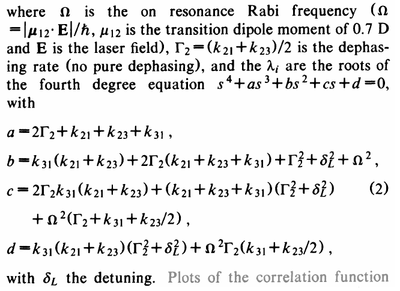
which gives them Rabi oscillations on top of the typical curve with antibunching followed by bunching elbows:
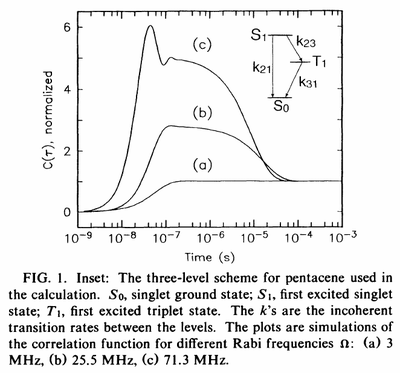
and a good fit of the data:
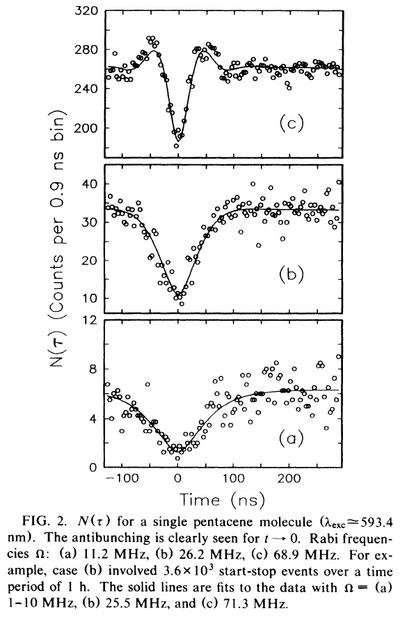
Their description of the molecule:
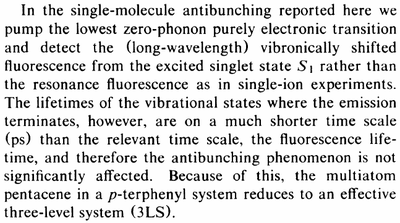
They also looked at the antibunching of two molecules:
